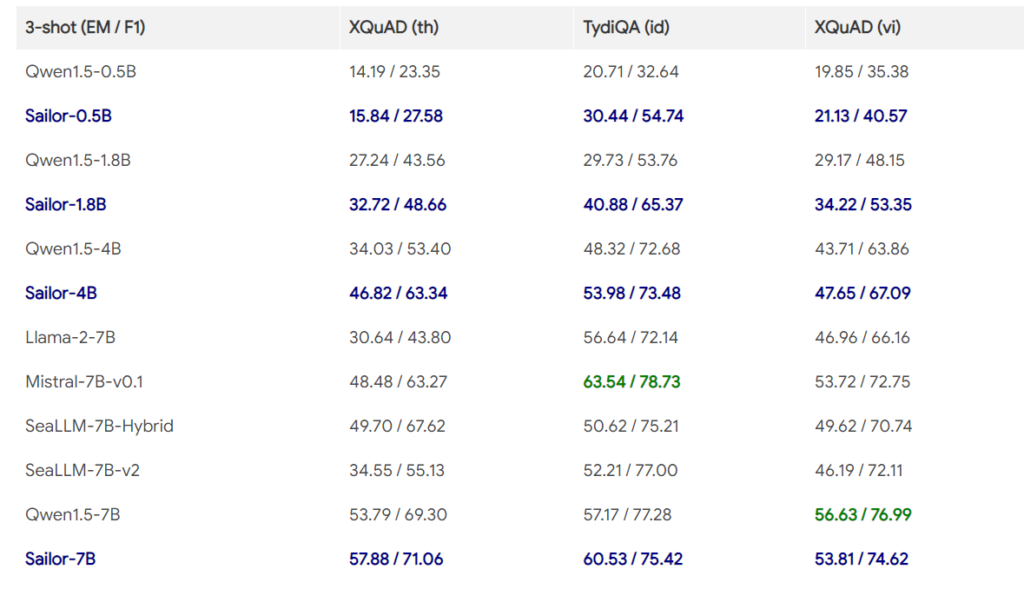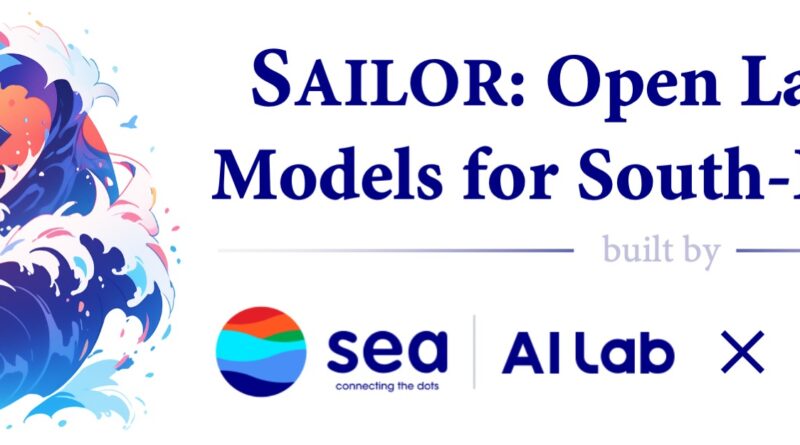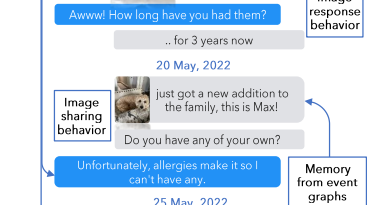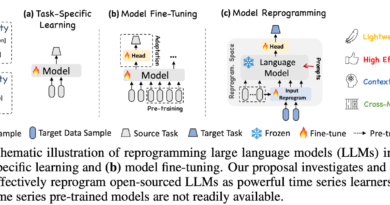Meet Sailor: A Suite of Open Language Models for Bridging Linguistic Barriers in Southeast Asia
Language barriers often hinder effective communication and collaboration in today’s interconnected world. This is particularly true in Southeast Asia, a region renowned for its linguistic diversity. The vast array of languages spoken in this region poses a unique challenge for language technology. Traditional language models struggle to comprehend and bridge the linguistic gaps between languages such as Indonesian, Thai, Vietnamese, Malay, and Lao, limiting their real-world applicability.
To address this challenge, a team of researchers from the Sea AI Lab and Singapore University of Technology and Design has developed Sailor, a suite of open language models specifically tailored to the linguistic intricacies of Southeast Asia. Sailor stands apart from conventional approaches by employing meticulous data curation, aggressive deduplication, and innovative mixture algorithms. This careful methodology ensures that Sailor is finely attuned to the nuances of Southeast Asian languages, enabling more accurate and meaningful text generation and comprehension.
Sailor builds upon the robust Qwen 1.5 models and undergoes extensive pretraining on a massive corpus consisting of 200 to 400 billion tokens. The focus of this pretraining is on languages prevalent in the Southeast Asian region. By leveraging this vast amount of data, Sailor possesses the capability to understand and generate text across a wide spectrum of languages, setting a new standard in multilingual language technology. The suite offers various model variants, ranging in size from 0.5B to 7B, to cater to diverse computational needs, ensuring broad accessibility and utility.

The efficacy of Sailor models is exemplified by their performance in various benchmarking tasks, demonstrating their superior design and implementation. In question-answering tasks, commonsense reasoning, reading comprehension, and standardized exams tailored to Southeast Asian languages, Sailor models have achieved remarkable proficiency. For example, the Sailor-7B model achieved an exact match score of 57.88% on the XQuAD (Thai) benchmark, 60.53% on TydiQA (Indonesian), and 53.81% on XQuAD (Vietnamese), surpassing its predecessors and establishing new benchmarks for accuracy and reliability.
Sailor’s advanced understanding capabilities are further evident in commonsense reasoning and reading comprehension tasks. In the XCOPA benchmark, the Sailor-7B model achieved an accuracy of 72.2% across Thai, Indonesian, and Vietnamese tasks, showcasing its ability to interpret and reason with complex text. Similarly, in reading comprehension evaluated through the Belebele benchmark, Sailor-7B achieved impressive scores of 44.33% in Indonesian, 45.33% in Vietnamese, and 41.56% in Thai.
The introduction of Sailor represents a significant advancement in the pursuit of comprehensive language models capable of navigating the intricate linguistic landscape of Southeast Asia. By combining advanced methodologies with an inclusive approach to language diversity, Sailor addresses the pressing need for tailored language technologies in the region and provides a blueprint for future advancements. The success of Sailor in benchmarking tasks highlights the potential of specialized models in enhancing our understanding and interaction in the field of computational linguistics.
Language technology plays a crucial role in fostering communication, knowledge sharing, and cultural exchange. The development of Sailor opens up exciting possibilities for enabling seamless collaboration and bridging linguistic barriers in Southeast Asia. It empowers individuals, organizations, and governments to overcome language obstacles and unlock the full potential of this vibrant and diverse region.
In conclusion, Sailor’s suite of open language models represents a significant milestone in addressing the linguistic challenges of Southeast Asia. By leveraging innovative methodologies and extensive pretraining, Sailor models demonstrate remarkable proficiency in various linguistic tasks. The success of Sailor paves the way for future advancements in language technology and offers a promising solution for bridging linguistic barriers in Southeast Asia. With Sailor, the region can embrace its linguistic diversity and build a more connected and inclusive future.
Check out the Github. All credit for this research goes to the researchers of this project. Also, don’t forget to follow us on LinkedIn. Do join our active AI community on Discord.
If you like our work, you will love our Newsletter 📰






